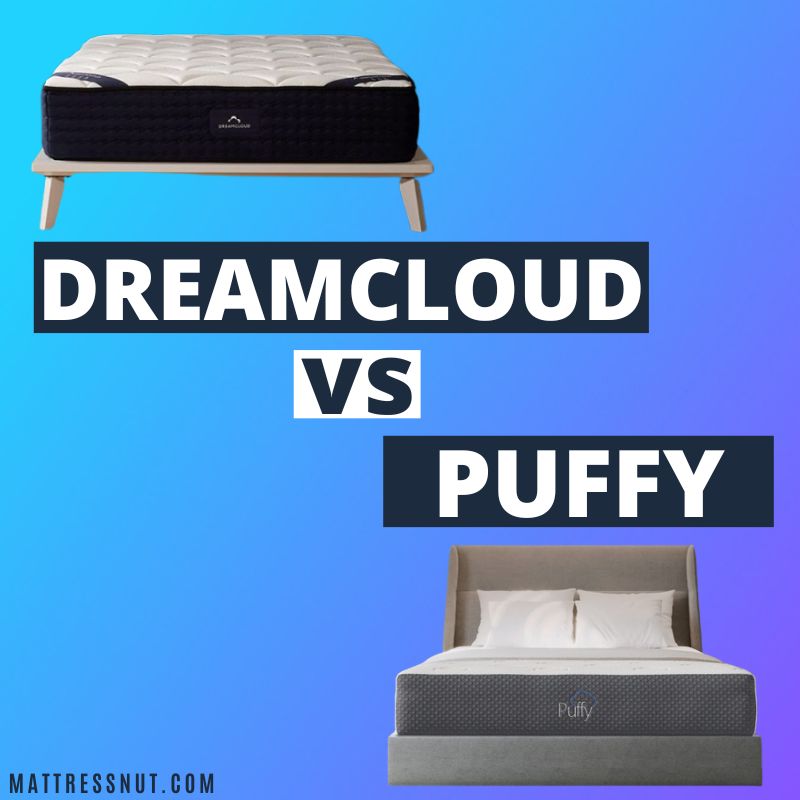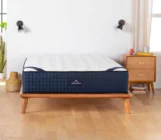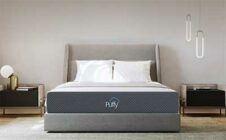Do you find yourself tossing and turning at night and unable to sleep comfortably? Then it’s time you upgraded your old mattress.
Two names appear to be the most popular when buying a new mattress: DreamCloud and Puffy. These are well-known brands of high-quality mattresses designed to help you sleep better.
But which of these is the better one? Are these mattresses recommended for everyone? And how do you make that decision for yourself?
To understand the critical differences between these mattresses, we compiled this comparison. We’re putting the DreamCloud vs. Puffy Mattress . Have a look!
Comparison Table – Dreamcloud Vs. Puffy
| DreamCloud | Puffy | |
| Best For | Breathability | Comfort |
| Trial Period | 365 nights | 101 nights |
| Warranty | Lifetime | LIfetime |
| Price Range | $599-$1299 | $699-$1498 |
The Key Differences Between Dreamcloud Vs. Puffy
Who The Dreamcloud Is Best For
Best For…
Back and stomach sleepers: DreamCloud offers accurate firmness for people who sleep on their back or stomachs. It provides support and comfort. It is a great mattress for stomach sleepers.
Some side and combination sleepers: Some side and combination sleepers may like DreamCloud as it has better support.
People who sleep hot: The DreamCloud features a layer of micro-coils that provide ventilation. The mattress features gel-infused memory foam.
Value shoppers: This mattress comes at cheaper face value and financing options. As such, it’s highly recommended for value shoppers (check 10 amazing mattresses under $1,000).
May Not Be Best For…
Motion isolation: Due to its use of micro-coils, it’s not the best for motion isolation. The micro-coils transfer a lot of the motion throughout the mattress.
Heavier people: DreamCloud can hold individuals as heavy as 230 pounds. But anything beyond that is not recommended.
Who The Puffy Is Best For
Best For…
Back and stomach sleepers: The Puffy Mattress has a medium-firm rating, which is sublime for back and stomach sleepers.
Motion isolation: This mattress features memory foam. This offers some of the best motion isolation among mattresses.
People with allergies: The top cover of the Puffy Mattress is soft to the touch and hypoallergenic, keeping you safe from allergies (also check the best selling bed sheets for allergies).
Value of free accessories: This mattress comes with free accessories that hold a lot of value. Hence, it’s essential for value shoppers who want the best of everything.
May Not Be Best For…
Edge support: Since it uses memory foam, it doesn’t provide a lot of edge support. But you can still be sure you won’t roll off the bed.
Despite having a cooling gel for people who sleep hot: The Puffy Mattress is still memory foam (check the top rated cooling mattresses for hot sleepers).
Top Features compared – Dreamcloud Vs. Puffy
Construction:
Construction is essential when discussing the performance of a mattress. Beginning with the DreamCloud, it features 5 layers for comfort and support. The base layer is a targeted-support coil layer. The coils are individually wrapped to provide contour.
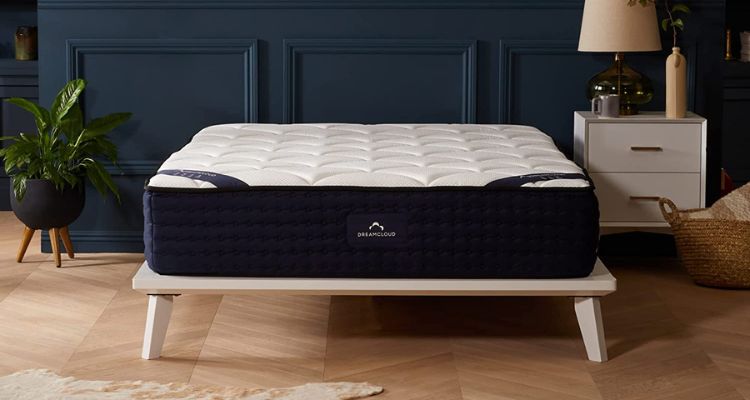
The next layer is the first foam layer and the essential base layer. It provides durability and prevents sagging. On top of that is the Sink-In-Just-Right layer, which is halfway between support and comfort. It provides just enough comfort to let you sink in but not enough to be swallowed.
Above that, you get the pressure-relief comfort layer made of gel memory foam. The memory foam provides pressure relief to key pressure points. And it wicks away moisture and keeps you cool.
Moving on to the Puffy Mattress, it has 5 layers. The bottom-most layer is the grip base cover that creates a good grip between your mattress and the bed frame. The next layer is the firm core support foam. It’s made of 6 inches of high-density foam and prevents sagging.
The middle layer is the Climate Comfort foam layer. 2 inches of cooling foam relieves pressure and ensures you sleep comfortably in every position.
Above that, you get the Cooling Cloud foam. This 2 inches of gel-infused foam are breathable and keeps you cool in the summer. Lastly, the topmost layer is the stain-resistant Cloud Cover, that’s hypoallergenic and keeps your mattress clean.
The main difference between the two is that the DreamCloud is a hybrid (with coils and foam), whereas the Puffy Mattress is all-foam. There are many different benefits for both of them. The DreamCloud is sturdier and more durable, whereas the Puffy Mattress provides better motion isolation.
Firmness:
Firmness is essential when talking about mattresses. However, how firm or soft a mattress you prefer will depend on your sleeping style.
DreamCloud has a firmness rating of 6.5, which it calls the “Luxury Firm.” Essentially, it’s on the medium-from side of the spectrum. Medium-firm is good for back and stomach sleepers. It provides comfort while supporting your key pressure points. Some combination and side sleepers may like it too (check the top rated mattresses for side sleepers). But it’s not exactly recommended for them. Couples with conflicting sleeping styles (back and stomach) prefer this mattress.
The Puffy Mattress is classed as medium-firm, though the exact firmness rating is never specified. It’s somewhere between 6 and 8. As you can see, it may be firmer than DreamCloud. Heavier people may notice this better than lighter people.
Much like with DreamCloud, it’s best for back and stomach sleepers. Side and combination sleepers may not find it as comfortably as the DreamCloud, since it’s slightly firmer. However, that’s very subjective and depends on weight and sleeping position.
Speaking of weight, they can handle up to 230 pounds or more since they’re both medium-firm. Lighter individuals should look toward softer mattresses. And obese people should seek firmer mattresses for added support.
Hence, due to its versatility and the fact that side sleepers may somewhat like it, the DreamCloud wins this round.
Motion Isolation and Edge Support:
Motion isolation is crucial to memory foam mattresses. It refers to how well the mattress can prevent vibrations from getting transferred across the mattress. The most common way of testing this is to place a glass of water on one side of the bed and see if it reacts to movements on the other.
And in that regard, the Puffy Mattress is the clear winner. The reason is all too evident. The Puffy Mattress is an all-foam mattress. It is made of many layers of foam, including memory foam. Memory foam is considered the best option for motion isolation. The high-density foam absorbs the movement. It compresses right underneath you instead of transferring movement.
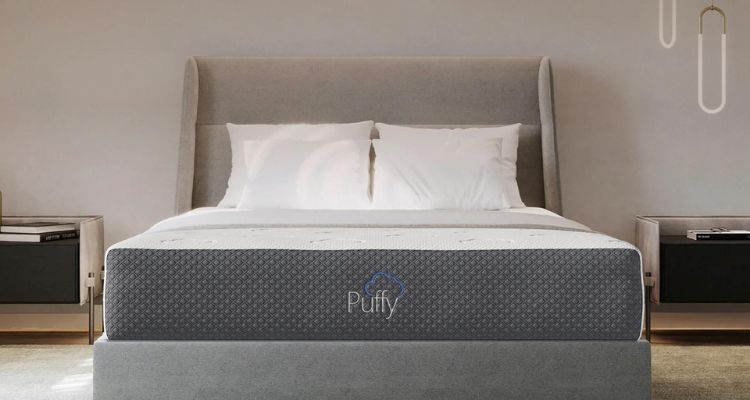
The DreamCloud, however, is a hybrid, meaning it has coils (check the best selling hybrid mattresses). The coils are micro-coils, meaning they are smaller, denser, and covered in fabric. They don’t transfer as much motion as traditional innerspring mattresses. However, they’re still not as good as the Puffy Mattress at motion isolation.
Edge support is another factor to consider. It refers to how much support is provided at the edges to prevent you from rolling off. In this regard, DreamCloud wins for its use of micro coils. These coils offer better edge support. However, the heavier layers of foam may not make it that apparent. As for the Puffy Mattress, the memory foam layers do not provide as much edge support.
Hence, the Puffy Mattress is the winner regarding motion isolation. But when discussing edge support, DreamCloud wins the round.
Temperature:
Ever wake up feeling hot and drenched in sweat? No, it’s not the air conditioning. Instead, you need a new mattress. Temperature is critical when considering a mattress for purchase. It will ensure your body regulates its temperature well.
How hot a mattress sleeps will depend on many factors, including the level of ventilation and special cooling technology. Luckily, DreamCloud has both. The first level of protection that you get from overheating is the coil system. The coils underneath the foam layers have many air pockets and work to circulate hot air away from your body. Additionally, they channel cool air into the mattress, keeping you cooler.
But the coils have a partner: the gel memory foam. The gel helps wick away heat from your body and keeps the memory foam layer cool. The soft, breathable fabric cover complements this.
The Puffy Mattress doesn’t stand back either, though. It features gel-infused foam that keeps you from overheating during the night. So, it’s matchless for those who sleep hot. Additionally, there’s the Cloud Cover that’s hypoallergenic and cool to the touch.
This mattress has another cooling foam layer. This layer is focused on providing pressure relief to your key pressure points (also check 10 great mattress toppers for pressure points). It has a breathable structure that keeps moisture and heats away from your body.
Both the mattresses provide 3 layers of heat protection. However, DreamCloud does it better for one reason and one reason only: the coils. The coils not only provide support but aid tremendously in ventilation. Hence, DreamCloud is the clear winner. It will keep you cooler than the Puffy Mattress, and the coils will accelerate ventilation.
Position and Body Type:
The type of body you have and the position you sleep in all factor in when deciding on a mattress. This mainly comes down to firmness and other things like core support and durability.
For this purpose, DreamCloud is best for all types of sleepers. It’s right on the golden firmness rating (6.5). This firmness rating, although medium-firm, will benefit all types of sleepers. Mainly, it’s designed for back and stomach sleepers. Combination and side sleepers will still find this mattress comfortable. However, it may not be as comfortable for them as softer mattresses.
And since it’s medium-firm, it can handle people as heavy as 230 pounds. So, it’s perfect for heavier people who want a supportive mattress (check 10 amazing mattresses for overweight people).
As for the Puffy Mattress, it too is classified as medium-firm. However, the exact firmness rating is not specified. Instead, it ranges from 6 to 8. Since it could be above 6.5, it’s safe to say it’s slightly firmer than DreamCloud. This makes it slightly less suitable for side and combination sleepers.
Additionally, this mattress is great for you if you’re a couple with different sleeping styles. But this is not all that recommended for couples who are side sleepers.
And just like DreamCloud, it can accommodate individuals as heavy as 230 pounds. Though it’s firmer, the threshold may be a bit higher. Either way, people heavier than 230 pounds should steer clear of these mattresses. They may sag under their weight and not provide enough support for your pressure points.
Price Range:
Lastly, it comes down to the price. There’s a lot to unpack when it comes to price. It’s a given that the price will increase as the size increases. But how much does it increase? And is it worth it? What about financing options and freebies? And is shipping free? We answer all this and more. But first, let’s compare the prices:
| Size | DreamCloud | Puffy Mattress |
| Twin | $599 | $699 |
| Twin XL | $799 | $749 |
| Full | $899 | $899 |
| Queen | $999 | $1049 |
| King | $1299 | $1249 |
| Cali King | $1299 | $1249 |
Verdict:
When we consider construction and performance, we find that both DreamCloud vs. Puffy is exquisite choices. But only one of them can win this showdown.
And the clear winner here is DreamCloud.
Being a hybrid mattress, you can expect a lot from DreamCloud, including higher durability and better ventilation. DreamCloud provides a better value for shoppers and comes with great accessories (check the top rated mattresses under 2,000 dollars).
That doesn’t mean that the Puffy Mattress lags far behind. Its all-foam design is great for comfort and motion isolation (check 10 mattresses with great comfort). And it provides valuable accessories for free!
Which mattress do you think is the best? Try one out and find out for yourself!

